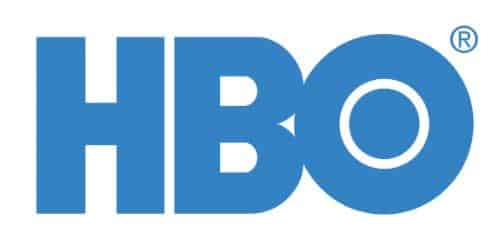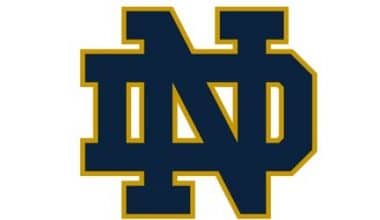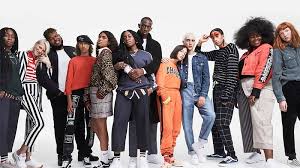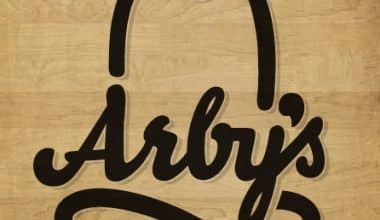HBO is an abbreviation for Home Box Office Inc., which refers to going to the movies and purchasing tickets at the box office for the current blockbuster film. Instead, HBO’s premium programming takes the experience inside the home. Despite the fact that HBO has developed and evolved greatly since its inception, the logo has stayed basically the same.
Read also: SoundCloud Logo: How the Logo Started & All You Need
Company Background and Current Situation
In 1965, Sterling Information Services launched what would later become HBO. Charles Dolan launched Sterling Information Services with the intention of providing television services to guests staying in New York City hotels. Dolan rapidly learned, however, that individuals and companies preferred free television.
As the company failed, he sold 20% of it to Time-Life Company and devised a new concept known as “The Green Channel,” which would compel viewers to pay for content once more. Even though The Green Channel was stocked with premium material, this idea didn’t sit well with customers at a time when television was basically free.
A Difficult Start
Time Inc. sent out a survey to potential subscribers to measure interest, and despite the fact that they seemed completely indifferent, the initiative moved forward. On November 8, 1972, The Green Channel was renamed HBO in order to appear more relevant. On the first night of service, it had roughly 400 total subscribers. All of the viewers were from Pennsylvania. HBO provided a hockey game and a two-year-old film on the first night. The prospects were bleak.
Time bought an additional 60% of the company, and by April 1975, they had over 100,000 subscribers between Pennsylvania and New York. It was barely floating. Then, on September 30, 1975, HBO televised “Thrilla in Manila,” a heavyweight fight between Muhammad Ali and Joe Frazier. A total of 15,000 people from Florida joined the subscribers from Pennsylvania and New York. By the end of the year, they had 300,000 users spread throughout 16 states, and growth more than doubled the following year. HBO has subscribers in every state in 1980.
Extending their Influence
Cinemax, HBO’s second channel, debuted in 1980. They set a lower subscription pricing and put it in direct competition with Showtime. HBO was soon able to compensate film studios for feature film broadcasts. HBO routinely helped sponsor films to assist their broadcasting operations. Once they were in the movie business, they went full throttle by founding the movie studio Tri-Star Pictures alongside CBS and Columbia.
HBO started producing original material in the 1980s. Most of these early choices aren’t very well-known, but they did offer something that regular TV didn’t: mature content with swearing and even nudity.
In 1989, HBO launched Comedy Channel, which later merged with the business HA! to form Comedy Central. This channel would produce a number of successful shows, including The Daily Show with Jon Stewart (1999-2015), South Park (which debuted in 1997 and is still active), and Chappelle’s Show (2003–06).
HBO and Cinemax got second channels in 1991, each with a 2 at the end. From there, possibilities for alternative media for many various groups of people, such as HBO Family and HBO Latino, further grew.
With The Sopranos, which aired from 1999 to 2007, and The Wire, which aired from 2002 to 2007, the 1990s and 2000s saw even more attention to producing outstanding, original television (2002–2008). These and other shows were notable because it became evident that they were distinct from other shows on the market. Furthermore, these concerts were innovative in terms of maturity and deep depth.
Amazing Streaming Success
HBO is now producing a large amount of original material, which keeps fans yearning for more and customers signing up for subscriptions. The HBO original drama The Game of Thrones (2011-2019) transformed George R.R. Martin’s fantasy universe into an eight-season-long streaming blockbuster. With goods and spin-offs on the way, it’s evident that the corporation is committed to creating exceptional entertainment.
Timeline of HBO’s History
- 1965 – Charles Dolan founded Sterling Information Services and subsequently launched “The Green Channel,” which was quickly acquired by HBO.
- 1972 – HBO debuts on November 8, 1972, with 400 customers.
- 1975 – HBO is the first to employ satellite programming, hosts “Thrilla in Manila,” and has 100,000 customers in Pennsylvania and New York.
- 1976 – HBO has more than doubled its subscriber base and has grown in popularity.
- 1977 – HBO finally begins to earn a profit. HBO has customers in every state and has established Cinemax.
- 1982 – The number of subscribers surpasses 9.8 million.
- 1989 – Warner and Time Inc announce a merger, and HBO’s new Comedy Channel joins forces with HA! to form Comedy Central.
- 1990 – Warner Communications and Timer Inc merge.
- 1991 – Cinemax 2 and HBO 2 premiere. This marks the start of a number of “spin-off” networks, including HBO Family and HBO Latino. HBO starts providing services throughout Eastern Europe.
- 1997 – HBO received 90 Emmy nominations and won 19 Emmy awards.
- HBO Go is introduced in 2010, continuing the heritage of fantastic and popular entertainment.
- 2020 – HBO Max is formed, combining HBO material with a massive collection of WarnerMedia movies and shows.
Evolution of the HBO Logo
HBO, the first premium television channel, debuted in 1972. The previous year, Charles Dolan, the head of the United States’ first urban underground cable television system, approached the Time-Life Corporation with an idea for a new cable television channel.
The public opposed this plan, but after an enticing incentive, half of them changed their minds. HBO became a television network about ten years later. Home Box Office was a working title, but owing to a deadline, Time-Life chose to keep it on the air and later modify it. This, however, never occurred. The main difference is that it was later abbreviated to HBO.
The HBO logo has remained mostly unchanged despite a few modifications. The logo was much more ornate in the beginning, but it became increasingly simple as the company grew in success.
1972-1975
Rather than using an abbreviation, this early design spells out “Home Box Office.” The font is Westinghouse Regular, and it is exclusively found in the HBO logo. A ticket stub is placed beside the words, in the blank spot next to “Box.” Three loops of closely spaced circles around the outside of the wording and a ticket.
These design elements should remind the visitor of an old-school marquee advertising a “coming soon” or “now showing” movie experience. Since this is the only HBO logo with all of these graphic elements, it looks busy and hard to read. This logo is made up of so many small parts that it would be hard to remember.
1975-1980
The new HBO logo debuted on May 1, 1975. It, like the one that will come after it, is in black and white and uses a modified version of the Avant Garde Gothic Bold typeface. Instead of writing out “Home Box Office,” as the previous logo did, this one sticks with the HBO moniker. The “H” is distinct from both the “B” and the “O.” The letter “B” looks to be in the background, behind the letter “O,” which has a circle in the middle that is designed to represent a camera lens.
This logo is significantly more appealing to the eye than the one from 1972–1975. It will also be far easier to recall. The camera lens in this logo gives the impression that it is taking a picture of the “B” or that the “B” is taking a picture of the viewer. In any case, it strongly suggests that filmmaking is taking place in some manner.
1980-Present
The most current example debuted in April of 1980. This logo, like its two predecessors, is black and white and employs the modified Avant Garde Gothic Bold typeface. Similarly to its previous logo, the “H” in this one stands alone, while the “B” and “O” are linked together. The letters have also been narrowed so that there is more space between the “H” and “B,” and the camera lens within the “O” has more room as well.
All of these adjustments result in a logo that is clearer and more memorable. While the earlier logo had a somewhat blurred “B,” it was occasionally mistaken for an “E” rather than a “B.” While this may be tough to imagine while examining the logos up close, with a little distance, determining what letter the “B” is when the “O” is hiding becomes more difficult.
Elements of HBO Logo Design
Over the course of several decades, the HBO logo has stayed very true to its original design.
Color
All three logo versions are black and white in hue. This has never changed between evolution options. The use of striking black is very important because it shows class and refinement to the viewer. Furthermore, it is clean and may be used in conjunction with other design components.
While the logo is usually black, the color schemes are occasionally flipped, and the HBO logo is white on top of a black background. This gives the logo more variety if the background color is a deeper color.
Font
The two later logos, with the exception of the first, feature a bold uppercase sans serif font, a modified version of the Avant Garde Gothic typeface. The Max logo will give the brand’s typography a personal touch.
HBO Max is a streaming service developed by HBO. It features HBO original programming as well as a big library of material obtained from WarnerMedia.
2019 Pre-launch
Before HBO Max was officially launched, this logo was shown on social media as a way to let people know about the new platform. This logo, however, would not be the official one used by HBO. The black HBO logo is contained within a multicolored rectangle that stands atop the word “max” in all lowercase in this logo. The “Max” typeface is rounded and comes in a color palette of teal, violet, and magenta.
This logo, like the original HBO logo, is far more intricate than necessary. The rectangle carrying the HBO is unneeded, and the “max” is way too large in comparison to the size of the HBO logo. The larger “max” indicates that the platform will prefer programming outside of HBO’s reach. On this one, the typeface for the “max” is also overly rounded. Because the HBO font is so bold, the rounded letters look out of place.
Official Debut – 2020
When HBO Max debuted in 2020, the design used the long-established HBO logo as well as the term “max.” While the HBO is black and white, the “max” is a purple and ultramarine blue combination that swirls together. Gilroy’s typography is in all lowercase letters.
This logo is much more balanced than the one that was shown before the launch of the platform. The “max” appears playful and energetic next to the black HBO logo, symbolizing a new way to watch television. They work effectively together without overwhelming the spectator. The way “max” is designed shows that it will bring something new to HBO, but it won’t take over the platform. The Gilroy typeface is also a great choice because it is round but also has corners, just like the powerful typography in the original logo.
Legacy of HBO
Despite the fact that the platform appeared doomed to fail at first, HBO takes television programming to a whole new level for its audience. They’ve also had a huge impact on the comedy scene, with stand-up specials and even comedy-only shows.
People will keep watching as long as HBO keeps making shows with interesting characters and interesting stories. It may have served as proof of concept that premium entertainment works, but HBO now faces stiff competition. As a result, as the television landscape changes, it will continue to evolve. The creation of a platform like HBO Max demonstrates their willingness to do so. The fact that their logo is still as eye-catching and modern today as it was in 1980 demonstrates that it is a logo that will last. Not only that, but it also serves as a robust foundation for the addition of additional services.
Additional Services
HBO HD
HBO HD (formerly known as HBO HDTV from March 1999 to April 2006) is a 1080i HD simulcast feed of the HBO network.
HBO’s primary channel and its six multiplex channels are both continuously streamed in high definition. HBO HD is carried by every major cable TV provider in the United States, including but not limited to Charter Communications (including systems formerly owned by former HBO sister company Time Warner Cable), Comcast Xfinity (which, in 2016, began downconverting HBO, Cinemax, and other cable channels transmitting in 1080i to 720p60), Cox Communications, Optimum, and Verizon FiOS, among others.
Between the beginning of the HD simulcasts for HBO, multiplex feeds in 2008, and the middle of the 2010s, most pay television providers that carried HBO HD only offered the primary channel in HD, with HD service of the multiplex channels changing by market. By 2020, the vast majority of cable and satellite TV providers will have either a completely HD channel lineup, with all seven HBO multiplex channels transmitted in high definition, or a hybrid SD/HD channel lineup.
Read Also: PUNISHER LOGO: The True Meaning of the Controversial Logo, Revealed!!!
On June 12, 1997, Home Box Office, Inc. stated that it would begin broadcasting a high-definition simulcast stream, with an initial deployment to television providers scheduled to begin in the summer of 1998, when manufacturers of HD-capable television sets anticipated beginning retail sales.
HBO was the first American cable television network to begin transmitting a high-definition simulcast feed on March 6, 1999. Since existing widescreen prints of those films were already scalable in the 16:9 widescreen aspect ratio, they could easily be upconverted to HD resolution, the HD feed initially only transmitted theatrical films from the network’s programming suppliers (at first accounting for about 45% of its available feature film output, expanding to around 60% by early 2001) and HBO’s in-house original movies in the format.
On January 14, 2001, the network debuted a 13-week Sunday “encore” presentation of Season 2 of The Sopranos in remastered 1080i HD. This marked the beginning of HD broadcasting of original content. (Since 1996, in preparation for remastering in HD, HBO has mandated that the creators of its original shows shoot their episodes in widescreen, which are then downconverted for the standard definition feed to accommodate 4:3 television displays.)
Read Also: PAYPAL LOGO: Meaning, Font, History & Evolution
On March 4, the season three debut of the mafia drama “Mr. Ruggerio’s Neighborhood” aired on HBO, making it the network’s first first-run episode to be broadcast in high definition from the start (and downconverted for the main standard-definition feed). In January 2001, HBO’s then-Senior Vice President of Technology Operations Bob Zitter told Multichannel News that the network had decided to wait to broadcast its original shows in high definition until there was the widespread availability of HDTV equipment at retail.
On September 25, 2004, an HBO World Championship Boxing program featuring Roy Jones Jr. and Glen Johnson was the first sporting event broadcast in high definition.
Dolby Digital 5.1 can also be used for HD broadcasting. On September 1, 2008, HBO started broadcasting its six multiplex channels in high definition, with HD simulcast feeds of HBO2, HBO Family, HBO Signature, and HBO Latino available on DirecTV.
HBO On Demand
If you already pay a premium to your cable or satellite provider to get HBO, then you don’t have to pay any more to get access to HBO on Demand, HBO’s companion subscription video-on-demand (SVOD) program. HBO has its own Roku video channel, and its VOD material is also available on some virtual MVPD platforms, such as DirecTV Stream, YouTube TV, and Hulu. Movies from HBO’s distribution partners and back catalog of original shows are also available on HBO on Demand (including weekly series, documentaries, sports magazine and documentary programs, and concert and stand-up comedy specials).
In addition to the network’s current and historical original series, the service’s library content (which includes whole seasons of those series) is also available on a rotating basis.
On July 1, 2001, HBO on Demand debuted via Time Warner Cable’s Columbia, South Carolina system, making it the first SVOD service offered by an American premium service.
The service was created so that HBO customers could watch any show they wanted, whenever they wanted to. This would cut down on the number of times viewers had to cancel their subscriptions because they couldn’t find their favorite shows. The first 3D video-on-demand (VOD) content was made accessible by HBO on January 3, 2011, to linear HBO subscribers signed with Time Warner Cable, Comcast, and Verizon FiOS. This content was comprised of theatrical feature films available in 3D.
In 2015, HBO on Demand began in the United Kingdom for customers of IPTV provider TalkTalk TV, who receive access to HBO’s programming via YouView set-top boxes as part of a separate VOD subscription offered by TalkTalk TV.
HBO Go
Accessible exclusively to HBO Go members with a broadband internet connection, HBO Go is a TV Everywhere service. Play.hbogo.com hosted it, and there were iOS and Apple TV apps available for it as well.
Most Samsung Smart TV models, Android smartphones and Android TV, Amazon Fire TV, Chromecast, PlayStation consoles (PS3 and PS4), Xbox One consoles, Roku devices, and Amazon Fire TV, Amazon Fire TV Stick, and Android devices and Android TV.
HBO Go offered both theatrically released films (obtained through the network’s pay television contractual periods for recent studio releases and from library content arrangements with film distributors) and HBO original programming (including scripted series, made-for-cable movies, comedy specials, documentaries, and sports documentary and magazine programs). The seven linear HBO channels were not available in real-time on HBO Go, HBO Now, or HBO Max. Only HBO and Cinemax among American pay-TV providers offer VOD without live network feeds.
HBO Go went live on a national scale on February 18, 2010, initially available to existing HBO subscribers signed with Verizon FiOS. The service is based on the prototype HBO on Broadband service, which premiered in January 2008 to linear HBO subscribers of Time Warner Cable’s Green Bay and Milwaukee, Wisconsin systems.
Read Also: NETFLIX LOGO: Evolution & Tips on Digital Branding
The on-demand streaming service was first envisioned as a TV Everywhere platform offered solely to existing members of the linear HBO television service, and it carried 1,000 hours of program material available for streaming in standard or high definition.
(In order to watch material on the HBO Go website or mobile apps, users needed a password that came with their linear HBO subscription from a participating television provider. This included apps for streaming devices like Roku and Apple TV, as well as select video game consoles.)
Because most traditional and virtual MVPDs have distribution deals for HBO Max, WarnerMedia announced on June 12, 2020, that the mobile and digital media player apps for HBO Go would be withdrawn in the U.S. on July 31, 2020. Only the desktop website of HBO Go is accessible to subscribers of the companies that have not signed deals with HBO Max (primarily Altice USA’s brands, Mediacom, smaller cable providers, and closed-circuit university television systems that did not have staff available during the COVID-19 pandemic to contractually transfer their credentials to HBO Max). In certain European, Latin American, and Asian areas, the “HBO Go” brand is still in use for HBO’s streaming products.
HBO Now
Prior until July 31, 2020, the previous HBO Now logo was in use from April 7, 2015.
Former over-the-top (OTT) subscription streaming service HBO Now (known as HBO from August to December 2020) offered on-demand access to HBO’s library of original content and theatrical films and catered to cord-cutters who did not have a pay television subscription to the linear HBO service.
HBO Now was offered as a paid add-on to Amazon Prime Video, Sling TV, AT&T TV, and Hulu, as well as online and as apps for Apple iOS and Apple TV devices; Android tablets, phones, and Android TV devices; Amazon Fire TV; Roku devices; Xbox consoles (Xbox 360 and Xbox One); PlayStation consoles (PlayStation 3 and later); and select TiVo devices.
HBO stated on October 15, 2014, that it would introduce an over-the-top (OTT) subscription streaming service in 2015. This service would be available in 2015 as a standalone product and would not require a cable or satellite subscription to see the content.
Read Also: NISSAN LOGO: Why Did Nissan Change Its Logo (Invaluable 2022 Tips)
HBO Now was announced on March 9, 2015, and released to the public on April 7, 2015. After its official debut, the service was made accessible only through Apple Inc. for Apple TV and iOS devices for three months. Subscriptions to the service were then made available through other participating Internet service providers.
HBO Now, at $15 per month, had the same content and functionality as the discontinued HBO Go. It used to be that new episodes of HBO shows would be posted to streaming services on the same day (and at the same time) that they first aired on HBO’s primary linear channel. There were more than 8 million HBO Now members as of February 2019.
As of August 1, 2020, HBO Now will be known simply as HBO, per an announcement made by WarnerMedia on June 12, 2020. While WarnerMedia has secured distribution deals to bring HBO Max to other platforms, they have yet to do so for Roku. Until HBO Max replaces it in November 2020, the HBO streaming service functioned as the network’s primary OTT platform for Roku and Amazon Fire and Fire TV users.
The HBO streaming service will end on December 17, 2020, as a result of a deal with WarnerMedia announced the day before to offer HBO Max on Roku devices starting the following day.
Related Articles
- TV ADVERTISING: Advantages, Disadvantages, Costs, Types (Detailed Guide)
- Jumia Flash Sales 2020: Top 10 discounts to look out for
- CAR TITLE LOANS: 11 Alternatives to Raising Cash
- NETFLIX COMPETITORS: Who are they? (Competitor Analysis & Stock)
- Jumia Black Friday: Best Practices & All You Should Know (+ how-To Guide)






